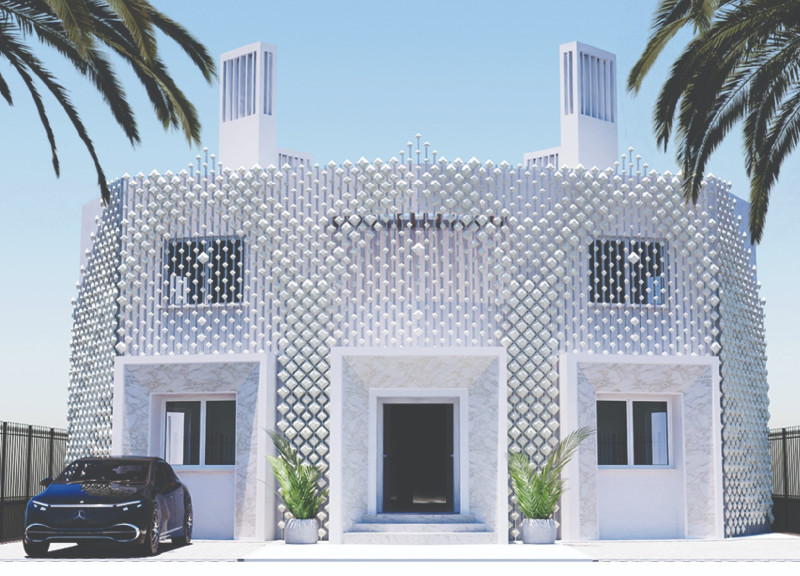5 key facts about this project
At its core, the project serves as a multifunctional space, designed to accommodate a variety of functions that respond to the needs of its users. This adaptability is an essential feature that highlights the architect's commitment to flexible design. The layout of the building emphasizes openness, encouraging interaction and providing spaces that can easily transform according to different activities. This multifunctional aspect is essential in dense urban environments, where maximizing utility within space is critical.
The architectural design displays a keen attention to materiality, as evidenced by the selection and application of various materials that not only enhance visual appeal but also promote sustainability. Predominantly, the design incorporates glass, steel, and natural stone, each contributing to the overall character of the building. Glass facades create a sense of transparency, allowing natural light to permeate the interior spaces while establishing visual connections with the outside environment. This integration of natural light contributes to the well-being of occupants and enhances the spatial experience within the building.
The use of steel is pivotal in defining the structural framework of the project. Steel, known for its strength and versatility, supports large open spaces and removes the need for excessive interior columns. This openness enhances the flow and usability of the interior layout, making it adaptable for various functions, such as community events or intimate gatherings. The structural design is complemented by the use of natural stone, which grounds the design with a sense of permanence and connection to the site. The juxtaposition of these materials not only adds depth but also fosters a dialogue between the building and its surroundings.
Unique design approaches can be perceived throughout the project, particularly in the attention to outdoor spaces. Balconies, terraces, and landscaped areas are woven into the architectural narrative, promoting a seamless transition between indoor and outdoor environments. These elements are designed to engage occupants with nature, encouraging outdoor activities and social interaction. The incorporation of green roofs and walls within the project further demonstrates a commitment to sustainability and biophilic design principles, enhancing biodiversity and creating a more resilient urban environment.
Throughout the project, user-centric design principles are evident, prioritizing accessibility and inclusivity. Thoughtful considerations, such as barrier-free pathways and communal spaces, ensure that the building welcomes diverse groups of people. This openness reinforces the idea of community, making the building a nucleus for interaction and collaboration.
The architectural plans reveal meticulous detailing that highlights functional aspects while ensuring aesthetic coherence. The architectural sections offer insights into the thoughtful layering of spaces and the play of volumes that define each area. A careful study of the architectural designs illustrates how light and shadow interact throughout the day, enhancing the experience of moving through the space. These design features reflect a comprehensive understanding of spatial dynamics and human interaction within built environments.
This project stands as a testament to contemporary architectural thought that prioritizes adaptable spaces, sustainable practices, and community engagement. It invites exploration and engagement, offering a framework for dialogues about architecture and its role in modern society. To fully appreciate the nuances of this design, readers are encouraged to delve into the architectural plans, sections, and ideas presented, which provide a richer understanding of the thoughtful considerations that have shaped this project.


 Omar Abou Nada
Omar Abou Nada 























